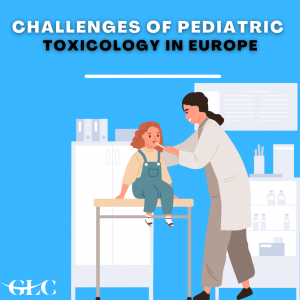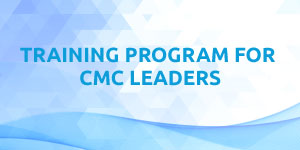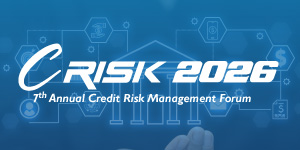Free knowledge to monitor the world of events. Have a look at our must read Blogs on Pharma, Finance, HR, Health and Cross Industry.
Challenges of Pediatric Toxicology in Europe
2022-08-16
Pediatric toxicology focuses on the adverse effects, remedies, and prevention of hazardous chemicals in kids.
Challenges of Pediatric Toxicology in Europe
Pediatric toxicology focuses on the adverse effects, remedies, and prevention of hazardous chemicals in kids. The diversity of Europe's cultures, economies, and regulations make the field of pediatric toxicology particularly difficult. In order to delve deeper into these issues, this article will examine certain toxicological concerns, treatment options, and mitigation tactics.

Specific Toxicological Concerns
Household Products and Pharmaceuticals: Due to the lack of a prescription requirement, over-the-counter (OTC) drugs are frequently viewed as low-risk and have made their way into the medicine cabinets of many European homes. These medicines provide fast treatment for a range of illnesses, from painkillers and cold remedies to digestive aids. Their extensive distribution and strong marketing tactics have increased their popularity in European homes. Young children are more likely to accidentally consume things since they are naturally curious and frequently explore the world orally.
Plant Toxins: Due to the diverse topography and climate of Europe, there are many different ecological environments, each of which supports a particular flora. While a tribute to Europe's ecological wealth, this botanical diversity also contains a number of plants that might be harmful if consumed. Children are particularly at risk because of their inherent curiosity and ignorance of the natural world, which can occasionally put them in danger.
Foreign Toys and Decorations: The market in Europe is overflowing with products from many countries, including toys, gadgets, cosmetics, and culinary items. The pricing of many of these goods, particularly those from nations that are quickly industrializing, are tempting to European customers. However, the varied sources also result in varied production standards, some of which may not be compliant with European safety standards and laws.
Treatments
Children may be particularly vulnerable to the negative effects of hazardous chemicals due to their smaller body size, developing physiology, and inherent curiosity. Here is a quick rundown of the main pediatric toxicology treatments:
- Stabilization: Prior to beginning any specific treatment, the priority right now is to stabilize the child's critical processes. Ensuring appropriate circulation, protecting the airway, and helping with breathing are some examples of this.
- Activated Charcoal: Activated charcoal is frequently used for swallowed poisons because it can bind to some poisonous compounds in the stomach and stop them from entering the bloodstream.
- Gastric Lavage: In some circumstances, especially if the dangerous chemical was recently consumed, the stomach may be pumped to expel its contents.
- Antidotes: Certain antidotes can mitigate the effects of some poisons. For example, paracetamol (acetaminophen) overdose is treated with N-acetylcysteine.
- Supportive Care: There are several hazardous exposures for which there is no known cure. Treatment in these situations relies on supportive care, including hydration, keeping electrolyte balance, and symptom management.
- Decontamination: Various decontamination techniques, such as washing off chemicals or irrigating the eyes, may be used depending on the type of exposure and the route of exposure (ingestion, skin contact, inhalation).
- Monitoring: In order to watch for any lingering effects of the poison and guarantee the child's full recovery, it is frequently necessary to follow them continuously in a medical setting after the initial treatments.
Prevention Measures
Given that children are more susceptible to accidental exposures due to their curiosity and lack of understanding, prevention is the cornerstone of managing pediatric toxicity. Here is a quick overview of important preventive measures:
- Childproof Packaging: To prevent unauthorized access, place dangerous household goods and pharmaceuticals in child-resistant packaging.
- Safe Storage: Put cleaning supplies, chemicals, and medicines in secured cabinets or out-of-the-way locations. Keep dangerous substances away from anything that could be mistaken for food or drink.
- Educational Campaigns: Public awareness programs that emphasize the "look-alike" characteristics of some unsafe products and foods can warn parents, caregivers, and kids about potential dangers.
- Clear Labeling: Make certain that all products, including drugs, have clear labels. Clear your home of any unlabeled or expired medications.
- Natural Dangers: Informing families about poisonous plants or mushrooms in their area and giving them advice to instruct kids not to consume unidentified plants.
- Safe Disposal: To keep them from being found in trash sites, encourage the correct disposal of chemicals and drugs.
- Emergency Information: Always keep the local poison control center's phone number handy, along with any emergency contact information.
- Regular Checks: Review your home for potential hazards on a regular basis, especially when your living situation changes or new products are introduced.
- Model Safe Behavior: Children frequently mimic adults. Make cautious to avoid taking pills in front of children and refrain from calling them "candy."
- Toys and Products: Make sure that all toys, especially those imported or acquired used, adhere to safety regulations and are free of dangerous materials.
“Now let’s look at some of the real-world incidents that happened related to pediatric toxicology. 647 occurrences of young children under the age of five being hurt by laundry detergent capsules—most often from ingestion were recorded in the UK between May and July 2012. Calls for safer packaging and more lucid warnings resulted from this. Three members of a family in France contracted serious mushroom poisoning in 2017 after eating poisonous wild mushrooms they had harvested. Foraging for mushrooms involves dangers because some deadly kinds resemble edible ones. In various European nations, notably the UK, children mistakenly ingesting button batteries have led to serious internal damage. The small size and shiny exterior of the batteries lure children, with potentially catastrophic results. Due to elevated lead levels in their paint, toys imported from China in the middle of the 2000s caused worry in Europe. Damage to a child's overall health and brain development can result from lead poisoning. Children in Scandinavia have experienced nicotine overdose after consuming flavored, eye-catching e-cigarette refills that contained highly concentrated nicotine.”
Conclusion
Pediatric toxicology is a societal issue in Europe that touches on culture, legislation, economics, and education in addition to being a clinical one. Each true story illuminates not only the immediate risks posed by toxic substances but also the broader implications of how we approach children's safety in our neighborhoods. First and foremost, there is no one-size-fits-all answer because of the diversity of Europe, whether it be in terms of culture, socioeconomic status, or national regulations. Understanding and recognizing these differences are necessary for addressing pediatric toxicological concerns. Personalized approaches that take into account local risks and norms of culture can be more successful than general guidelines. Additionally, while government agencies put out much effort to make children's environments safer, community involvement is crucial. Top-down policies can have a significant impact when parents, educators, healthcare providers, and even kids themselves are actively involved. Local awareness campaigns, grassroots initiatives, and school-based interventions can close any gaps that more comprehensive regulatory frameworks might miss.
Furthermore, while important, improvements in medical care reveal how reactive our systems are. The true success is in prevention. The number of events we need to treat in the first place can be greatly decreased by educating caregivers about potential household hazards, ensuring accurate product labeling, and promoting a culture of safety. The challenges of pediatric toxicology in Europe must be addressed holistically, collaboratively, and adaptively. We can build an environment where the safety and well-being of our children remain at the forefront of our collective consciousness by fusing strict laws with community engagement and medical developments.
Join our upcoming Masterclass on Fundamentals of Toxicology conducted by industry expert.
By Sasly Ahmeth, Social Media Executive & IT Support, GLC Europe, Colombo Office, Sri Lanka.
Get a feel for our events

Training Program for CMC Leaders - EU edition
27th October 2025 - 16th January 2026
Rich with practical insights and real-world applications
learn more >>
Training Program for CMC Leaders - US edition
27th October 2025 - 16th January 2026
Rich with practical insights and real-world applications
learn more >>
Mastering the Common Technical Document (CTD) for Biologics Masterclass - EU edition
12-16 January, 2026
From guidelines to submissions
learn more >>














